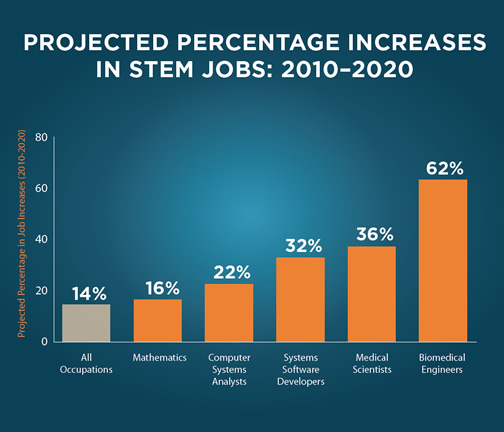Native plants are an integral part of a healthy landscape.
There are a number of reasons why that is, including but not limited to that
they are naturally low maintenance because they often require less water than
traditional sod. They do not require large amounts of
fertilizer or pesticides that plants from other places may need. If the plants are
native to your area, they have even coevolved with the wildlife as well. That means
that many native bird species also rely on native plants as a food
source.
 |
By Akos Kokai
(Native plant demonstration garden) [CC BY 2.0
(http://creativecommons.org/licenses/by/2.0)], via Wikimedia Commons
|
Non-native plants, otherwise known as invasive species, can
wreak havoc on a delicate ecosystem.
 |
http://solveoregon.org/why-we-care/invasive-plants
|
Air, Noise, Water
Pollution
In terms of water conservation and the precious value that water is in an ever growing world, using water wisely is of paramount importance. Unfortunately, watering lawns can contribute to waste of a natural resource, “30 percent of water consumed on the East Coast goes to
watering lawns; 60 percent on the West Coast. (Redesigning the American Lawn)”
(National Wildlife Federation). Invasive species also require an increased amount of
pesticide use that can pollute waterways.
Harm to Biodiversity
Native plants also provide critical habitat to a variety of
pollinators. Certain insects have coevolved to only eat certain plants,
and if invasive species have taken over then there is less and less food for
those insects to eat. That in turn causes there to be less food for the birds that
feast on insects. Check out an excerpt of a film about the important impacts that native plants can have on a landscape:
Consumption of
Natural Resources
Invasive plants often outcompete native plants because they usually lack their natural enemies in a foreign environment. As a result, invasive plants can strangle a hillside or choke a waterway easily. Alternatively, native plants natural abundance is due in part to the fact that they
are native to your climate, and thus have adaptations for the amount of water
and the soil moisture in your particular area (Backyard Conservation...).
Impacts to Public Health and Safety
Invasive species do require an increased amount of maintenance. Increased chemical use can lead to harmful effects in wildlife and humans (Benefits of Naturescaping). Extra fertilizer may also be required to maintain a green lawn. If you use native plants, and decide to compost in a natural garden, your soil will not
need as many chemicals to provide good nutrients to your plants!
Cost and Labor Intensive
The cost of upkeep for a traditional lawn is about $700 per
acre per year, as opposed to the care of a wildflower meadow at $30 per acre
per year (About Native Plants). The equipment used in the upkeep of a typical suburban lawn
includes lawn mowers, leaf blowers, and the occasional chain saw. These pieces
of equipment emit as much hydrocarbon in one hour as a typical auto driven 50
miles. (National Vehicle and Fuel Emissions Lab, Ann Arbor.) Every year, a
typical lawn requires 40 hours of maintenance, which is the equivalent of a
one-week vacation (Benefits of Naturescaping). The noise pollution from a lawnmower alone can be enough to
make anyone upset on an early Sunday morning.
Boring Landscapes
Avoid monoculture! Aesthetic concerns aside, native plants offer a wide variety
of shapes, colors, and textures for your yard.
Why spend all of that time maintaining an unnatural
landscape? Instead, give native plants a try. You won’t be disappointed!
Below is a preview of an excellent documentary film focused on the dangers of invasive species in Oregon. Washington state deals with a lot of the same resource problems as Oregon, and it is an informative piece on various issues in the Pacific Northwest.
Convinced that native plants are the way to go? Don't know where to start? Come learn more at Cascadia's FREE Native Planting 101 Workshop!!!
RSVP today for our native plant workshop, Saturday,
February 11th from 12:00-4:30 pm at the Wenatchee PUD auditorium!
Our plant sale ends by March 1st, so place your
order today to ensure you get what you want.
To order native plants, download a form HERE!
Cheers!
~ Ava
Works Cited
"About Native Plants." http://www.nwf.org/Garden-For-Wildlife/About/Native-Plants.aspx. National Wildlife Federation. Accessed 1/13/17.
"Backyard Conservation Tip Sheet." https://www.nrcs.usda.gov/wps/portal/nrcs/detail/national/home/?cid=nrcs143_023590
“Benefits of Naturescaping.” http://www.plantnative.org/how_benefits.htm
Green, Danielle. “Greenacres: Landscaping with Native Plants.”
US EPA. https://archive.epa.gov/greenacres/web/html/index.html Last updated on 2/21/2016.
Idaho Native Plant Society. Landscaping with Plants of the Intermountain Region. https://www.blm.gov/style/medialib/blm/id/publications.Par.71153.File.dat/Landscaping-small.pdf
“Let’s stop these silent invaders.” http://solveoregon.org/why-we-care/invasive-plants. Accessed 1/13/17.
“Why Native Plants Matter” Audubon society http://www.audubon.org/content/why-native-plants- matter. Bird Friendly Communities Blog. Accessed 1/13/17.
























